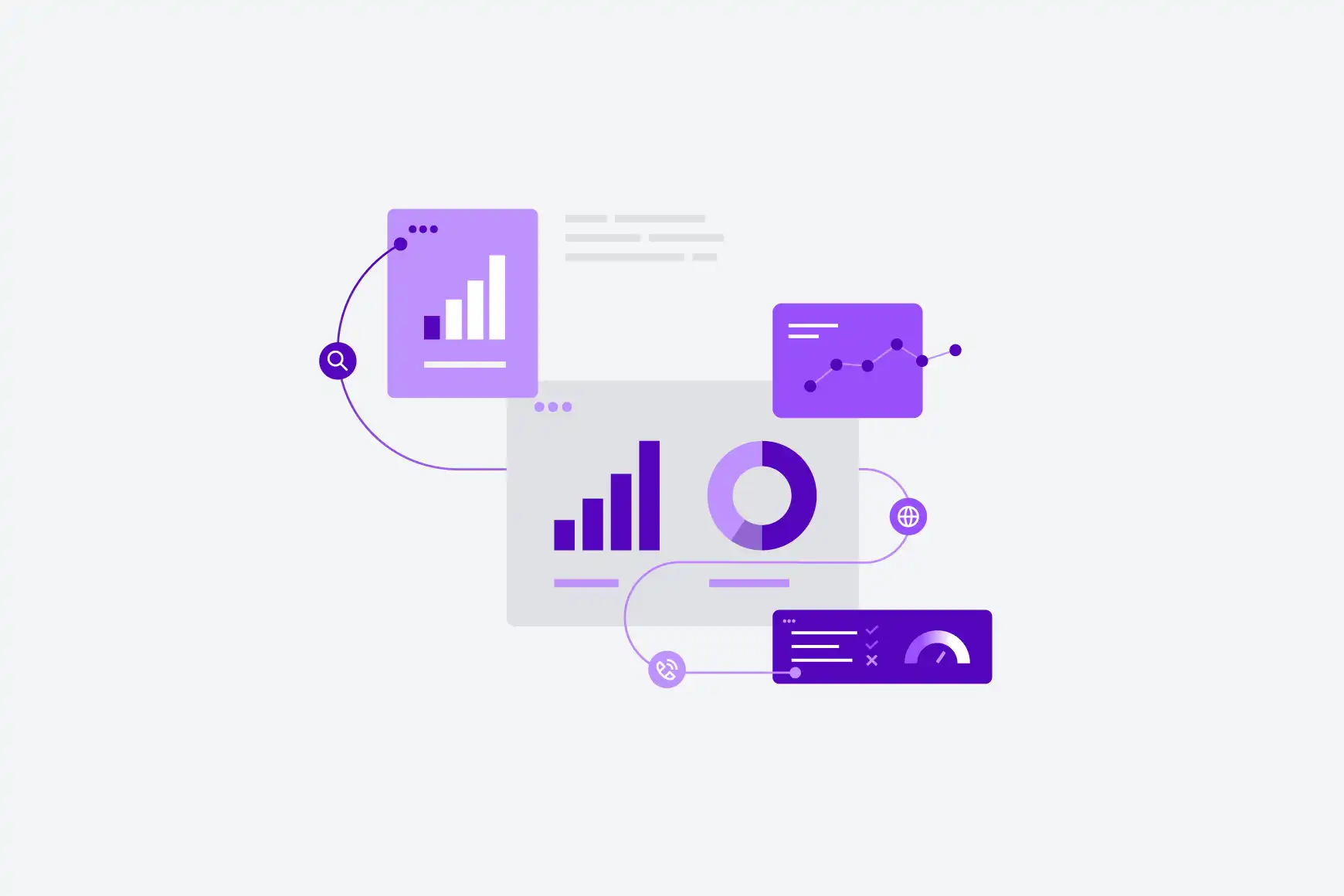10 steps to find the best call center industry benchmarks

By Celia Cerdeira
0 min read

Understand the difference between external and internal benchmarking and what to consider when looking for the best call center industry benchmarks.
Benchmark: to evaluate or check by comparison with a standard. A common process in business—after all, if you want to overcome your own goals, you have to go beyond your own data.
Benchmarking is a common process in every industry, allowing organizations to identify industry standards, business opportunities, track performance, and get an eye on the competition.
Engaging in benchmarking to determine best business practices, critically evaluate your business, and implement necessary changes has become essential for the success of any call center.
To identify successful call center industry benchmarks must be a priority of an innovative strategy for an ever-progressing field, as the contact center industry.
The four main types of call center industry benchmarks.
Benchmarks are often confused with key performance indicators (KPIs), although they’re not the same. Call center industry benchmarks are used as reference points to compare processes, products, and operations against competitors, industry trends, or other departments of the same company.
On the other hand, KPIs are monitoring tools that track performance against the strategic goals, flagging up when teams and the overall company is going off track on business objectives.
Broadly speaking, there are four main types of benchmarking processes:
- Internal benchmarking. It compares performance or practices from different departments, products, geographies, etc., within the same organization. You’ll need at least two areas within the organization (for example, call center and another department) with shared metrics or practices, and you’ll be able to understand the current standard of performance. It applies mostly to large, worldwide organizations.
- External benchmarking. It compares performance or practices against other organizations, giving you an objective vision of how your company is performing against other industry players and allowing you to set baselines and goals for improvement. It’s a highly valuable benchmarking process, but it requires more effort and time or, alternatively, a third party to collect data and information.
- Performance benchmarking. Usually, the first and most used benchmarking process to access performance. It involves gathering and comparing quantitative data. You’ll need the means to collect and analyze data and standard measures (internal or external) to compare extracted data.
- Competitive benchmarking. It measures the performance of your contact center against direct competitors and other contact centers.
The most common contact center benchmarks are:
- Average abandonment rate.
- Average talk rate.
- Average hold time.
- Average speed of answer
- Service level.

Finding the better call center industry benchmarks.
If you’re running your own benchmarking process, there are some steps you need to take to ensure you have the most accurate, interesting data to compare yourself with.
Below, you can find the ten steps to find the better call center industry benchmarks, compiled from two researchers at Purdue University.
1. Identify the process, practice, or service to be benchmarked.
Ensure a strong focus of your benchmarking efforts by starting with targeted questions. The questions should be specific, capable of being explored using qualitative or quantitative research efforts, and in line with corporate strategy.
2. Identify the companies against which you will benchmark.
When opting for competitive benchmarking, compile a list of potential companies. Then narrow down your list by deciding whether to engage in the same or cross-industry-benchmarking and whom to benchmark your company against.
If your goal is to set up a systematic, ongoing comparison between your company and its competitors, benchmarking within the same industry is necessary. If your goal is to assess dramatically different business processes or think outside the box, cross-industry comparisons are appropriate.
3. Collect and archive data about these companies.
Define your hypotheses, constructs to measure, variables to assess, data points to include, and specific formulas. This is the first step to ensure that your team accurately and consistently collects data to be valid and useful.
4. Analyze the data.
Interpret the data in a meaningful way. Consider causes for any trends, outliers, or inefficiencies. Analyze the data based on call center size, company size, geography, and business configuration. The data analysis will reveal gaps between your company’s practices and that of your industry’s best.
5. Project future performance.
Analyze business trends to understand how fast your industry is changing. Project the results of your benchmarking efforts beyond the issues of today to ensure that they don’t become quickly obsolete.
6. Communicate the results to your organization.
Decide who you will communicate your results with and what your goals for communicating results will be. Your objectives may be to get “buy-in” from critical team players or employees, reveal inefficiencies to a struggling team, or pitch a new marketing strategy. They should be conveyed in a most helpful way for the person or team that you are communicating with them to.
7. Establish objectives.
After the analysis results have been interpreted and communicated to the appropriate people, goals should be established. These should be concrete, attainable, and in line with your corporate strategy.
8. Develop an action plan for each objective.
Define specific, concrete actions to be taken. They should detail the tasks involved and include specific names and dates associated with each task.
9. Monitor the results and implement the action plans.
Continuously monitor the results of the benchmarking efforts and ensure that the action plans are consistently applied.
10. Start the process over again.
Adjust what is being measured, how it is measured, and what is included in the calculation to keep efforts aligned with desired results. Continually refine your benchmarking efforts to ensure that they are up-to-date and effective.
Rinse and repeat.
Engaging in effective benchmarking and incorporating the results into strategic and tactical initiatives may be the most effective method to increase your call center’s performance. Ensure that your company is amongst the industry’s best with calculated benchmarking efforts.
After having a good starting point, you can look for relevant metrics like shrinkage, customer satisfaction, abandonment rate, etc. Then, measure them against industry benchmarks regularly.
This blog post was originally published in February 2013, and updated in October 2021.







